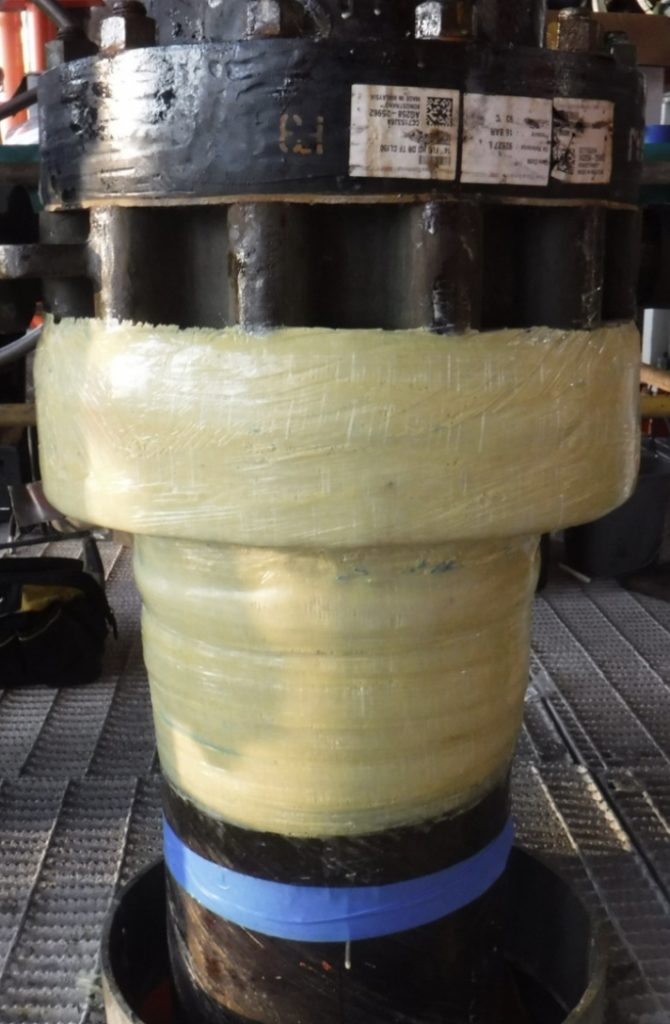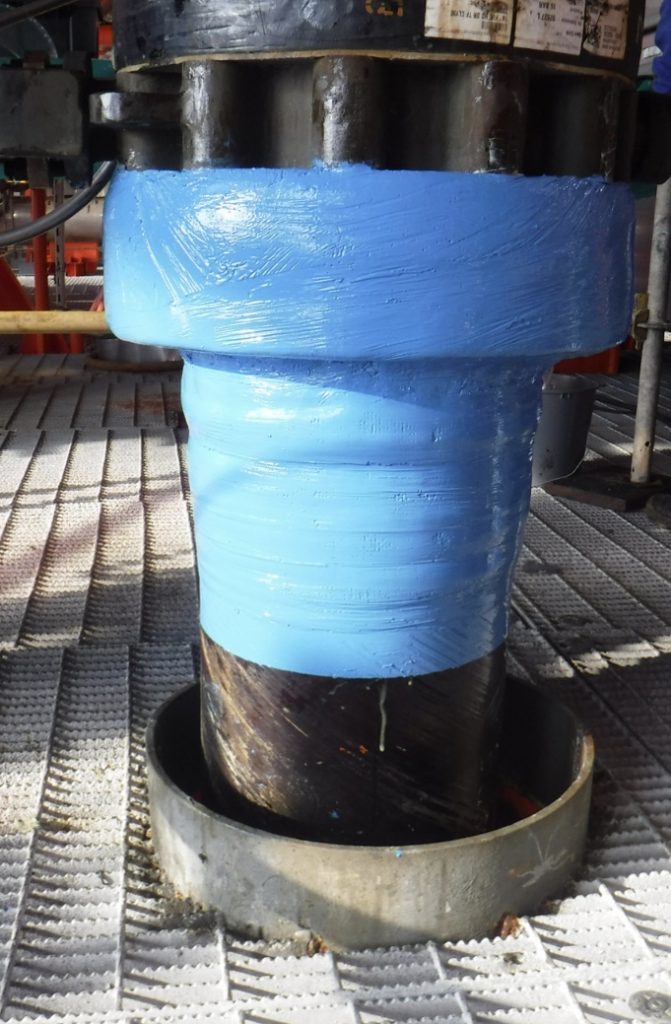ANGOLA
Pipe Details
- Leak one was under flange bolting on a 355-mm (14-inch) line
- Leak two was damage at a GRE joint where cracks had developed between a 508-mm (20-inch) and 51-mm (2-inch) line
- Design pressure 13.2 bar (191.5 psi)
- Operating Pressure 8 bar (116 psi)
- Design Temperature 40°C (104°F)
Summary
- A 355-mm (14-inch) GRE cooling water line on an FPSO developed a leak under a flange bolting. A second repair was required where a crack had developed on a joint between a 508-mm (20-inch) and 51-mm (2-inch) line
- Technicians applied 8 layers of ThermoWrap™ MT to the 355-mm (14-inch) flange repair and 10 layers on the joint between the 508-mm (20-inch) and 51-mm (2-inch) line
- No hot work was required
- No need to shut in production
It is not unusual for Floating Production Storage and Offloading (FPSO) vessels to remain on site producing oil for decades, and as the units age, processing systems and components begin to wear. Because taking these vessels to dry dock for repairs is costly and impractical, most maintenance is done offshore. While this appears to be a simple matter, it is a complex undertaking that introduces logistics challenges and often is impacted by sea state and weather conditions. In addition, if repairs are made using traditional methods, production must be shut in while the work is being done, which compounds the cost of the repair.
When an operator discovered leaks on several live glass reinforced epoxy (GRE) cooling water lines on an FPSO offshore Angola, immediate steps were taken to mitigate the damage. Stress and internal erosion had led to cracks and through wall defects in several places, including a joint. A repair solution was needed that would arrest the leaks and restore the line integrity for continued safe service.
A traditional solution would have required multiple areas on the line to be cut and replaced, but because the owner did not want production to be interrupted, CSNRI was asked to assess the situation and formulate an engineered composite repair (ECR) to restore the vessel to safe operations without halting production.

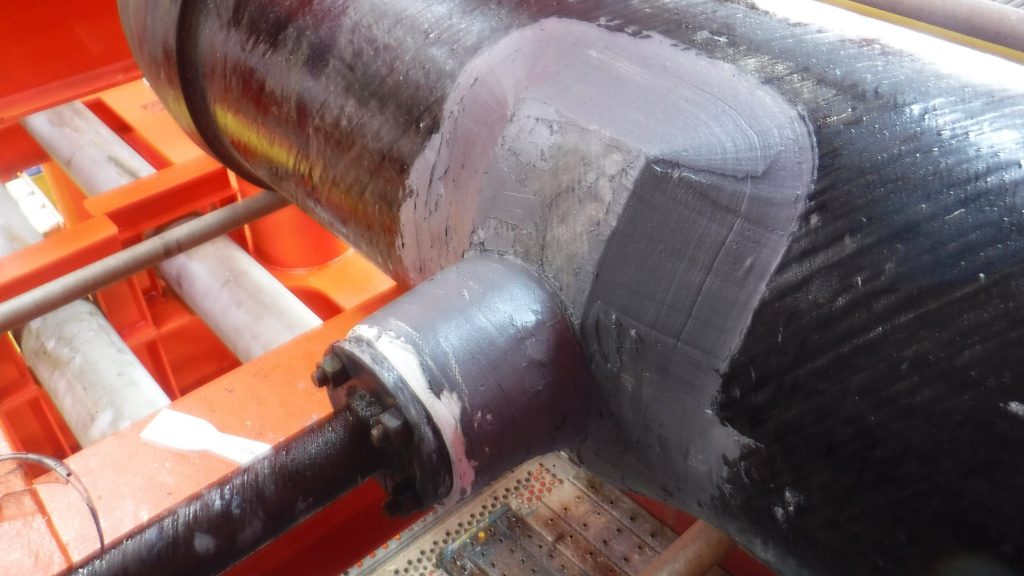
Engineers from the CSNRI office in Manchester examined the multiple GRE leaks, which included a leak under a bolted flange on a 355-mm (14-inch) line and a second repair to a joint between a 508-mm (20-inch) and a 51-mm (2-inch) line. Taking into account the complex geometry, the team evaluated the products in the CSNRI portfolio and as no isolation was possible, determined that the best approach would be to use an injection leak arrest system to seal the live leaks and then apply a ThermoWrap™ MT ECR (engineered composite repair) to reinforce the line and ensure continued service.
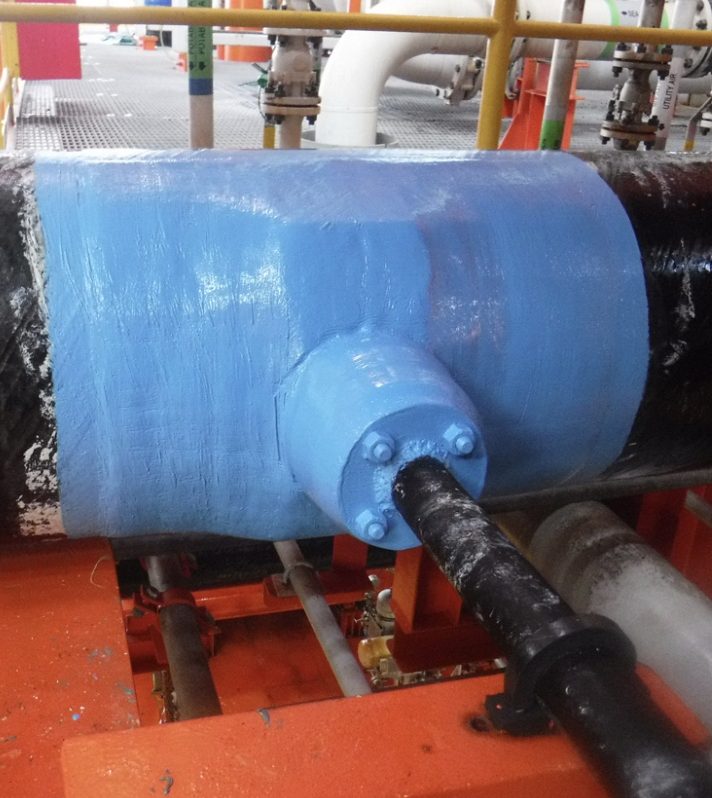
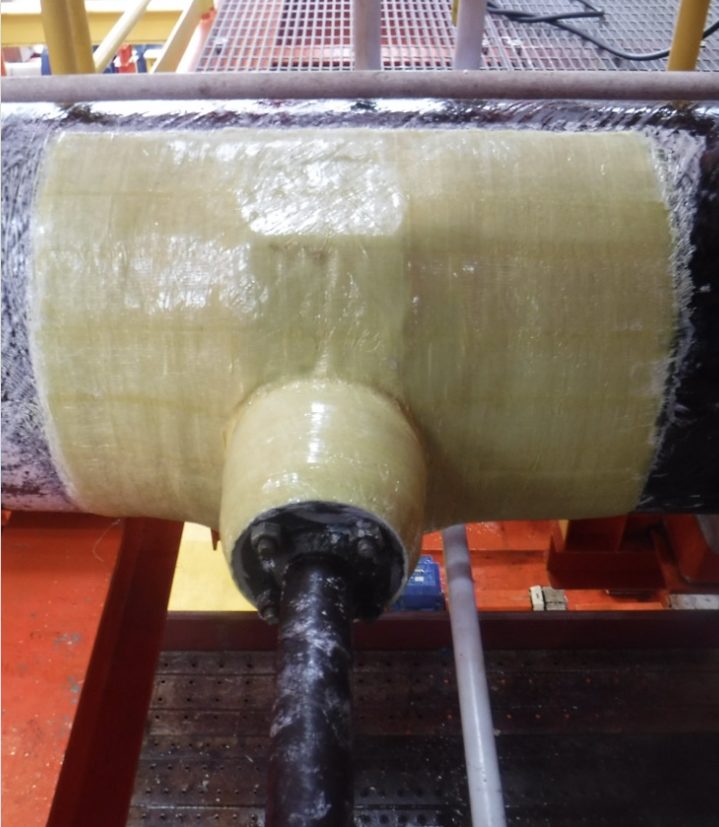
Two CSNRI technicians mobilized to carry out the repair and reinforce both repair areas using ThermoWrap™ MT engineered composite repair, a custom-engineered system that uses a high modulus fiberglass architecture in conjunction with a patented epoxy system. Its thick, non-crimped, glass fiber architecture and nano-tube-enriched resin combine to yield high strength characteristics. ThermoWrap™ MT is designed for high-temperature environments and contains a contrasting agent, this enables the repair to be monitored using common radiographic inspection methods to “see the composite repair” as well as the pipe wall.
The technicians used a proprietary composite injection system to arrest the live leaks and SynthoPoxy™ 101 to improve the complex geometry of the lines. Once the leaks were sealed, the ECR system was installed on the first damaged line, using 8 layers of ThermoWrap™ MT on the 355-mm (14-inch) line and 10 layers on the 51-mm (2-inch) branch. Within 8 hours, the repairs were fully cured, and the lines made safe for continued service.
This advanced ECR allowed multiple damaged GRE lines with difficult geometry to be restored to safe operations without interrupting production and with little disruption to day-to-day operations. The final repair will enable monitoring for the duration of FPSO operations.
